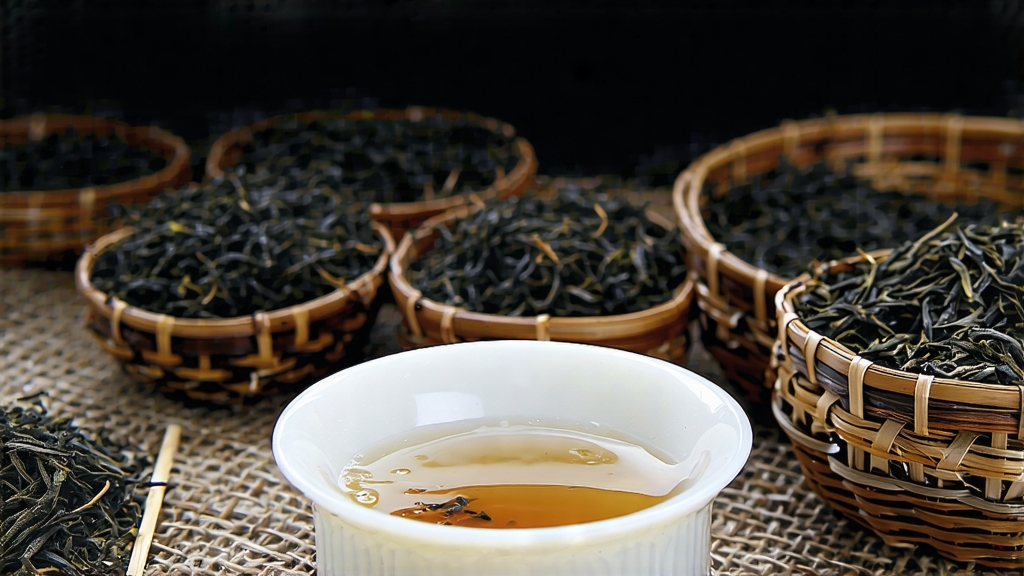
If black tea were a monarchy, Lapsang Souchong would sit on the oldest throne. Born in the precipitous Wuyi Mountains of northern Fujian, this is the tea that astonished European palates in the early seventeenth century, gave the English language the word “bohea,” and still carries the fragrance of pine torches lit four hundred years ago. To understand Lapsang Souchong is to travel through Chinese dynastic trade, Victorian drawing rooms, and modern third-wave tea bars in a single sip.
Historical Footprints
The first documented mention of “Xiaozhong” (small-leaf cultivar) appears in 1646, when retreating Ming soldiers passed through Tongmu Village and accelerated withering by burning local Masson pines. The accidental smoke infusion pleased Dutch traders in Xiamen so much that they paid triple the price of ordinary black tea. By 1669 the British East India Company listed “Lapsang” as a separate commodity, and Catherine of Braganza’s dowry chest reputedly contained several chests, cementing tea-drinking fashion in the British court. Thus, the world’s earliest fully oxidized tea became its first smoky luxury.
Terroir and Cultivars
Authentic Lapsang Souchong can only originate from the 600–1,200 m band inside the Wuyi National Nature Reserve where morning fog reflects off basalt cliffs, slowing photosynthesis and concentrating amino acids. Two micro-varietals dominate:
• Cai Cha (vegetable tea) – small, olive-shaped leaves that yield a lighter, orchid-accented cup.
• Ye Cha (wild tea) – seed-propagated bushes scattered through the forest, producing thicker leaves rich in geraniol and linalool, translating into a deeper pine-resin sweetness.
Anything grown outside this 68 km² core is marketed as “Zhengshan Xiaozhong,” but connoisseurs reserve the unhyphenated name for the smoke-kissed original.
Crafting Smoke into Leaf
The process begins before dawn when pickers pluck one bud plus two leaves, still cool with mountain dew. After 4–6 hours of sun-withering, the leaves are moved into a three-level wooden building called a qinglou. Here, pine logs—aged three years to reduce resin acidity—are lit in a pit below the ground floor. Dampers and bamboo mats control airflow so that smoke, not flame, curls upward for 8–10 hours while workers roll the leaf every thirty minutes. Oxidation proceeds simultaneously: polyphenols convert into theaflavins, turning leaf edges copper-red while the veins remain jade-green. A final 70 °C charcoal bake fixes the aroma, after which the tea rests in unglazed clay jars for at least ninety days to let harsh tar soften into mellow camphor and longan notes.
Grades and Styles
- Traditional Pine-Smoke Lapsang: dried over resinous Masson and Chinese red pine; unmistakable campfire nose, yet the cup finishes with candied plum.
- Modern Unsmoked Lapsang (frequently labeled “Wuyi Black”): skips the smoke phase, emphasizing cocoa and honey characteristics; popular in domestic China.
- Aged Lapsang: stored in bamboo-lined tin boxes for 5–15 years; the smoke recedes, revealing dried apricot, sandalwood, and a hint of leather reminiscent of old Burgundy.
- Special Tongmu “Jin Jun Mei” variant: picked solely from buds, gently smoked for only twenty minutes, yielding golden tips and a silky malt body that commands over $1,000 per 500 g.
Brewing: Gongfu versus Western
Gongfu style (preferred for evaluation)
• 5 g leaf in 120 ml gaiwan
• 95 °C water, flash rinse to awaken the leaf
• 1st infusion: 10 s, bright crimson, top note of pine and cinnamon
• 2nd–4th: add 5 s each, revealing cacao, longan, and a cooling camphor aftertaste
• 7th–9th: extend to 60 s; sweetness lingers while smoke becomes a whisper
Western style (morning mug)
• 2.5 g per 300 ml, 95 °C, 3 min
• Milk tolerant; the pine